Chris Eboch's Blog, page 18
September 28, 2016
Writing and Running: 6 Lessons Learned from Jogging #NWHFD #fitnessday
 In honor of National Women's Health & Fitness Day (September 28, #NWHFD #fitnessday), I wanted to share some lessons I learned from running.
In honor of National Women's Health & Fitness Day (September 28, #NWHFD #fitnessday), I wanted to share some lessons I learned from running.In March of 2011 I started jogging. Despite the occasional illness, injury, and ‘I don’t wanna,’ I’m still getting out regularly. On one long and rather tedious solo run, I started making connections between jogging and writing and life.
Get Some Running Buddies
It helps to have inspiration. I started jogging with a Couch to 5K group that met twice a week. Having the regular schedule kept us on track. The program helped us pace ourselves, starting with short runs and frequent walks, and working up to a 45 minute run. We also had an experienced leader to offer advice.
Several of us continued running together after the program ended. I wouldn’t get out there as often if people weren’t waiting for me. I’d be tempted to stop early, if I didn’t have the encouragement of the group. Hey, peer pressure is powerful! You might as well make it work for you. Plus, it’s more fun to run with other people.
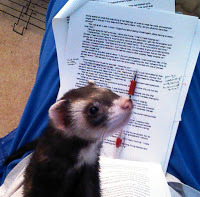 For writers, it’s important to find the right peer group for your needs. For many, this is a critique group. They may be large or small, meet in person or online, have open or closed membership, get together weekly or monthly or as needed. Finding a group that suits your needs is invaluable.
For writers, it’s important to find the right peer group for your needs. For many, this is a critique group. They may be large or small, meet in person or online, have open or closed membership, get together weekly or monthly or as needed. Finding a group that suits your needs is invaluable.Other writers share goals and deadlines, checking in with a friend daily or weekly to report progress. There’s that peer pressure again! Even a non-writing friend can help hold you accountable. (But choose carefully. Most people don't understand writing or the publishing business and have no idea how long it takes to get something published. Many people don't even realize that you may never sell a manuscript. You don't want someone making you feel bad because you haven't finished and sold your novel within six months.)
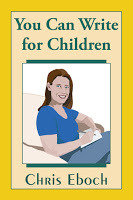 Finally, social groups can provide camaraderie and networking. I live in a small town with a science and engineering college; I know far more computer geeks than writers. But by making monthly trips to Albuquerque to attend a writing meeting, I’ve made many friends who understand what I do. I’ve also made connections by teaching workshops and guest speaking for groups like Sisters in Crime. For those who can’t attend in person, online discussion boards, listserves, and online classes offer information and a sense of connection. (Women on Writing offers many online classes. I’ll be teaching You Can Write Stories for Children starting October 17 and Advanced Plotting: Keep Those Pages Turning starting January 9, 2017.)
Finally, social groups can provide camaraderie and networking. I live in a small town with a science and engineering college; I know far more computer geeks than writers. But by making monthly trips to Albuquerque to attend a writing meeting, I’ve made many friends who understand what I do. I’ve also made connections by teaching workshops and guest speaking for groups like Sisters in Crime. For those who can’t attend in person, online discussion boards, listserves, and online classes offer information and a sense of connection. (Women on Writing offers many online classes. I’ll be teaching You Can Write Stories for Children starting October 17 and Advanced Plotting: Keep Those Pages Turning starting January 9, 2017.)It’s Distance, Not Speed
It really is about the journey, not how fast you get there. Pace yourself, and enjoy the journey, or you might burn out along the way. If you can see the end, or at least imagine the cheering crowds and free food, it might give you the extra boost you need to keep going. But take time to enjoy the sights, and the experience will be a lot more fun.
As a writer, don’t focus so much on the response to your query letters. Sure, celebrate successes, and try to learn from disappointments, but put most of your energy into enjoying the journey. (That works for the rest of life, too.)
Robin LaFevers had a post at Writer Unboxed about keeping creative play in your writing.
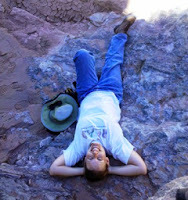 But Keep Moving
But Keep MovingA slow pace may get you there, but if you have a long way to go, you might as well do it running. A marathon will take a lot longer at a stroll than at a jog, even a slow jog. Run when you can, walk when you need a rest, but keep moving. That’s the only way to reach the end.
Take the time you need to learn and practice your writing craft. Do as many drafts as you need to polish your novel. Don’t rush, but do keep working. Write a page a day, and you’ll have a complete draft in a year. It may not be perfect, but it will be more than what you started with.
Practice Makes Perfect, or At Least Lessens the Pain
If you’re training, you need to get out regularly. Running once a month will just leave you sore and frustrated each time, and you won’t see any progress in your fitness.
It’s the same with writing. Establishing habits and sticking to them will keep your mind fit. Writing several times a week will hone your skills and make it easier to get started next time.
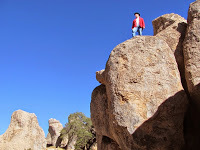 Beware of Shortcuts
Beware of ShortcutsIf I map out a 5K run, but take every shortcut, that could cut the distance down to 3 1/2K. Easier, sure, but that won’t prepare me for running a 10K. It’s the same with life. Whether you’re trying to switch careers, meet the right man or woman, or finish a novel, some shortcuts may help, but others may do more harm than good.
I work with a lot of writing students. The beginners want to know if they’ll get published after taking one course. Nobody wants to spend 10 years learning how to write, but you need to do the work in order to earn the reward at the end. If you beg your friend to send your rough draft to her editor, you’ll blow your chance to make the best use of that connection. If you self publish your work before it’s ready, you’ll waste time that could be better spent working on your craft.
Sometimes the long, hard path is the only one that gets you where you want to go.
Push Yourself Sometimes
With enough practice, you should get better. When I started jogging, it was a struggle to go for 10 minutes without a break. Six months later, I could make it through 45 minutes without stopping.
 And then I plateaued. Jogging had become comfortable, if not easy. Why cause more pain by trying to go farther or faster?
And then I plateaued. Jogging had become comfortable, if not easy. Why cause more pain by trying to go farther or faster?Because that’s the only way to get better. And most likely, it’s the only way to stay interested. Fortunately, one of my jogging partners is great about coming up with new workouts. We add in some sprints one day, do hills another day. We choose different routes on different terrains. Variety keeps it interesting, which makes it easier to work hard.
With my writing, I find that I get bored if I become too comfortable with something. After publishing a dozen children’s books as Chris Eboch, I wanted a change. I began writing romantic suspense for adults, using the name Kris Bock. This brought new challenges – writing books two or three times as long as what I was used to, exploring romantic subplots, delving deeper into character. I didn’t always get things right the first time, but I became a better writer – and I renewed my interest in writing.
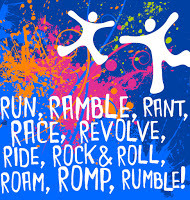 (Janice Hardy blogged about “growing pains” novels, the books we must struggle through in order to grow as writers.)
(Janice Hardy blogged about “growing pains” novels, the books we must struggle through in order to grow as writers.)Are you a writer who runs? Join the Writers Who Run Facebook Group to meet up with like-minded folks and learn about events.
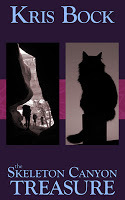 Kris Bock writes novels of suspense and romance with outdoor adventures and Southwestern landscapes. The Mad Monk’s Treasure follows the hunt for a long-lost treasure in the New Mexico desert. In The Dead Man’s Treasure, estranged relatives compete to reach a buried treasure by following a series of complex clues. In The Skeleton Canyon Treasure, sparks fly when reader favorites Camie and Tiger help a mysterious man track down his missing uncle.
Kris Bock writes novels of suspense and romance with outdoor adventures and Southwestern landscapes. The Mad Monk’s Treasure follows the hunt for a long-lost treasure in the New Mexico desert. In The Dead Man’s Treasure, estranged relatives compete to reach a buried treasure by following a series of complex clues. In The Skeleton Canyon Treasure, sparks fly when reader favorites Camie and Tiger help a mysterious man track down his missing uncle. Whispers in the Dark features archaeology and intrigue among ancient Southwest ruins. What We Found is a mystery with strong romantic elements about a young woman who finds a murder victim in the woods. In Counterfeits, stolen Rembrandt paintings bring danger to a small New Mexico town. Read excerpts at www.krisbock.com or visit her Amazon page.
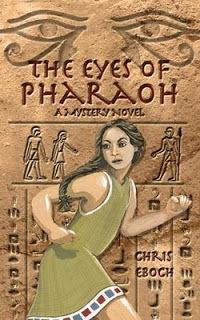 Chris Eboch writes fiction and nonfiction for all ages, with 40+ published books for children. Her novels for ages nine and up include Bandits Peak, a survival thriller that will appeal to fans of Gary Paulsen’s Hatchet; The Genie’s Gift, a fantasy adventure drawing on the Arabian Nights stories; The Eyes of Pharaoh, a mystery that brings ancient Egypt to life; The Well of Sacrifice, an action-packed drama set in ninth-century Mayan Guatemala; and the spooky-fun Haunted series, which starts with The Ghost on the Stairs.
Chris Eboch writes fiction and nonfiction for all ages, with 40+ published books for children. Her novels for ages nine and up include Bandits Peak, a survival thriller that will appeal to fans of Gary Paulsen’s Hatchet; The Genie’s Gift, a fantasy adventure drawing on the Arabian Nights stories; The Eyes of Pharaoh, a mystery that brings ancient Egypt to life; The Well of Sacrifice, an action-packed drama set in ninth-century Mayan Guatemala; and the spooky-fun Haunted series, which starts with The Ghost on the Stairs. Chris's book Advanced Plotting helps writers fine-tune their plots, while You Can Write for Children: How to Write Great Stories, Articles, and Books for Kids and Teenagers offers great insight to beginning and intermediate writers. Learn more at www.chriseboch.com or her Amazon page, or check out her writing tips at her Write Like a Pro! blog.
Published on September 28, 2016 05:00
September 26, 2016
Celebrate #Diversity during #HispanicHeritageMonth #HHM
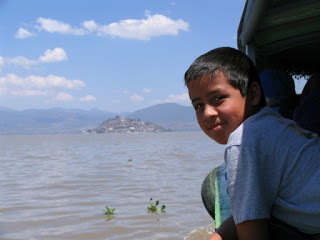 A young friend in MexicoSeptember 15 through October 15 is Hispanic Heritage Month! Some 55 million people in the United States identify as Hispanic, making this the second largest ethnic group.
A young friend in MexicoSeptember 15 through October 15 is Hispanic Heritage Month! Some 55 million people in the United States identify as Hispanic, making this the second largest ethnic group.Why September 15 to October 15? September 15 marks the anniversary of the independence of five Latin American countries: Costa Rica, El Salvador, Guatemala, Honduras, and Nicaragua. In addition, Mexico celebrates its independence on September 16 while Chile’s anniversary is September 18.
According to the US government, “The Library of Congress, National Archives and Records Administration, National Endowment for the Humanities, National Gallery of Art, National Park Service, Smithsonian Institution and United States Holocaust Memorial Museum join in paying tribute to the generations of Hispanic Americans who have positively influenced and enriched our nation and society.”
 Mayan ruins, Tikal, GuatemalaIn the Americas, many Hispanic people can trace their roots back to indigenous peoples. These include the Maya, Inca, Aztec, and others. Today’s Hispanics may also have roots in the Spanish explorers, the Africans who were brought to the New World as slaves, and of course many other cultures.
Mayan ruins, Tikal, GuatemalaIn the Americas, many Hispanic people can trace their roots back to indigenous peoples. These include the Maya, Inca, Aztec, and others. Today’s Hispanics may also have roots in the Spanish explorers, the Africans who were brought to the New World as slaves, and of course many other cultures.This provides teachers, librarians, homeschooling parents, and students many options for exploring Hispanic heritage in the Americas.
Middle Grade Novels and Nonfiction
Unfortunately, there aren’t many historical fiction novels about the Maya for young people. This National Geographic post only lists my novel, The Well of Sacrifice, and Seven Serpents Trilogy—Book 1, The Captive by Scott O’Dell as historical fiction for young people. It also lists a couple of travel books and titles on Mayan prophecy and myth.
A Book In Time has a list of some Books on Early American Civilizations: Inca, Aztec, Mayan, & other Native Americans.
School Library Journal has a post from 2009 on The Aztecs, the Inca, and the Maya: Empires Lost & Found, with fiction and nonfiction for different grades, pus links to Museum Collections
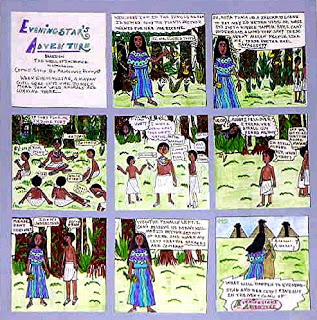 A student project for The Well of SacrificeResources
A student project for The Well of SacrificeResourcesTo learn more about Hispanic Heritage Month, visit the following sites:
The National Education Association provides Lesson Plans, Quizzes, Activities and Background Resources for National Hispanic Heritage Month, Grades K-5.
The US government site for National Hispanic Heritage Month includes resources for teachers and a calendar of events, mainly in and around Washington DC.
The National Endowment for the Humanities has lesson plans and links to websites on the conquistadors, the gold rush, the US-Mexican War, prayer to Ricoh, and much more. A featured lesson plan is for Esperanza Rising: Learning Not to Be Afraid to Start Over (also available inSpanish).
The PBS Hispanic Heritage Month site links to episodes about famous Latinos, issues affecting immigrants, and much more.
Scholastic offers resources for celebrating the month, including information on Latinos in history and Hispanic history in the Americas. Scholastic also has Bring Hispanic Heritage Month to Life: A Collection of Resources and 24 Great Ideas for Hispanic Heritage Month.
Hispanic Heritage Month includes information on the history of the month, people, events, and fun facts.
Please add any recommended books or resources in the comments.
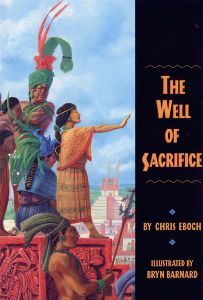 Chris Eboch’s novels for ages nine and up include The Eyes of Pharaoh, a mystery in ancient Egypt; The Well of Sacrifice, a Mayan adventure; The Genie’s Gift, a middle eastern fantasy; and the Haunted series, about kids who travel with a ghost hunter TV show, which starts with The Ghost on the Stairs.
Chris Eboch’s novels for ages nine and up include The Eyes of Pharaoh, a mystery in ancient Egypt; The Well of Sacrifice, a Mayan adventure; The Genie’s Gift, a middle eastern fantasy; and the Haunted series, about kids who travel with a ghost hunter TV show, which starts with The Ghost on the Stairs. Her writing craft books include You Can Write for Children: How to Write Great Stories, Articles, and Books for Kids and Teenagers, and Advanced Plotting.
Learn more at www.chriseboch.comor her Amazon page.
Published on September 26, 2016 12:31
An Online Workshop: Writing Stories for Children
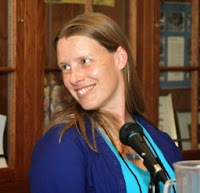 You Can Write Stories for Children!a writing class with Chris Eboch
You Can Write Stories for Children!a writing class with Chris EbochSTART DATE: Monday, October 17, 2016
DURATION:8 weeks (four classes)
WHERE: Online – work from home at your own pace
COURSE DESCRIPTION: Remember the magic of bedtime stories? When you write for children, you have the most appreciative audience in the world. But to reach that audience, you need to understand the business of writing for children, including the requirements for different genres, age ranges, and markets. You also need to write fresh, dynamic stories, whether you’re writing rhymed picture books or middle grade mysteries or edgy teen novels. In this hands-on workshop, we’ll explore how. You'll leave with a story in progress and ideas for future development.
Your enthusiasm is contagious, and the sheer amount of knowledge you possess is fantastic. Your advice was always spot on. The links to various articles and blogs was and will continue to be extremely useful.~ Nancy Partridge
I have to tell you that your workshop was the one I got the most useful information from. It was quite informative and introduced me to several trains of thought that were new to me. ~ Donna J. Barland
Thank you for putting together such a helpful workshop. Of the entire weekend, I think I learned the most from listening to you. Thanks again for such a great workshop. ~ Linda Reedy
Thanks for your terrific workshop yesterday at the SCBWI conference. I loved your thoughts on pacing, cliffhangers, etc. You certainly added to my positive experience! ~ Alyssa Kirk
Just a quick note to say thanks for your class this past weekend. Your class on Monday afternoon was my favorite. You gave us very specific things we could incorporate into our own work. That’s the kind of info I was looking for when I signed up for the conference. ~ Pamela Haskin
Chris is hands-down one of the best author-speakers we’ve ever had. I don’t think she uttered a word about her own life story as many do; she was all about teaching a vital and often forgotten aspect in our writing. The comments on her were full of grateful praise. ~ Robin Koontz, SCBWI Oregon retreat leader
WEEKS AT A GLANCE:
Week 1-2: The World of Writing for Children
We’ll start with an overview of the markets. These include books, magazines, and more. Learn the specific requirements when writing for different age ranges. This will help you decide where you feel comfortable – or give you many areas to explore!
Assignment 1: Read 5 to 10 picture books or stories for children or review two recent novels. Brainstorm 5 to 10 ideas using the material provided.
Week 3-4: From Idea to Story
Writing for children has many things in common with any good writing, and some things that are special. We’ll explore the essential elements of appealing to children. Participants will learn how to develop their ideas:
Identify a marketChoose a target ageMatch the story length and reading level to the target ageDevelop charactersCreate a plot with conflict and a three-part structureFocus on young characters who have control
Assignment 2: Choose one of your ideas and identify the appropriate target age group and several possible markets. Start developing your characters and planning a strong plot.
Week 5-6: Develop and Share Your Story
Share your story in progress (or a pitch/outline for a novel) and receive feedback from the instructor and the class.
Assignment 3: Pitch your story. Based on feedback, draft a complete picture book or short story, or plan a novel.
Week 7-8: The Next Steps
We’ll cover editing techniques, submitting your work, and your questions. Expect to leave this workshop with a story in progress, and a list of ideas for future development.
Assignment 4: If you choose, turn in your final story or novel outline. Develop a plan for next steps (finishing, editing, querying/submitting/self-publishing your work etc.).
COST: $99, which includes weekly assignments and individual feedback from the instructor. This class will be conducted through a Discussion Board, with the opportunity for students to ask questions and post homework samples.
BUY NOW: You Can Write Stories for Children! by Chris Eboch (8 weeks/4 classes, starting 10/17/2016) Limit: 15 students. Early registration is recommended.
ABOUT THE INSTRUCTOR: Chris Eboch is the author of over 30 books for children. Her novel for ages nine and up include The Well of Sacrifice, a Mayan adventure; The Genie’s Gift, a middle eastern fantasy; and the Haunted series, about kids who travel with a ghost hunter TV show. Chris’s writing craft books include Advanced Plotting and You Can Write for Children: How to Write Great Stories, Articles, and Books for Kids and Teenagers. Learn more at www.chriseboch.com or check out her writing tips at her Write Like a Pro! blog: http://chriseboch.blogspot.com/.
Chris has her MA degree in Professional Writing and Publishing from Emerson College in Boston. She taught through the Institute of Children’s Literature for 10 years and has led dozens of popular writing workshops around the world.
Chris also writes for adults under the name Kris Bock. “Kris Bock” novels are action-packed romantic suspense involving outdoor adventures and Southwestern landscapes. Read excerpts at www.krisbock.com.
Published on September 26, 2016 05:00
July 11, 2016
Writing #Kidlit for Children’s Magazines
This is the handout for the SCBWI New Mexico Shoptalk on Writing for Children's Magazines.
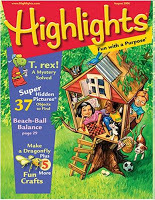 Explore the Magazine Markets:
Explore the Magazine Markets:
MagazineMarkets for Children’s Writers
Children’sWriters and Illustrator’s Market – on sale right now for $7.50!
The SCBWI “Magazine Market Guide” is in The Book, included with membership
Get magazine samples at your library, school, or house of worship; requests sample copies from the publisher; visit publishers’ web sites – many have online samples.
Lists of children’s magazines w/links to websites:
http://www.monroe.lib.in.us/childrens/kidsmags.html
http://blog.allaboutlearningpress.com/magazines-for-kids/
http://www.world-newspapers.com/children.html
Analyze magazines for content and style:
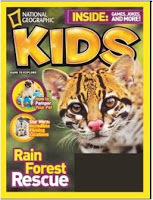 The cover and tagline: what is the magazine’s focus?
The cover and tagline: what is the magazine’s focus?
The table of contents: Are many articles written by one person? Is that person listed in the masthead as staff?Are there regular departments? Who writes these?This page may include submission guidelines.
Content:What types of stories/articles does it use? Be as specific as possible (fiction genres, nonfiction topics, types of activities. For recipes, are they healthy, fun to look at, etc.).Does everything relate to one theme?What is the breakdown of fiction, nonfiction, activities, and regular departments?How long are most pieces?How are pieces illustrated? What kind of sidebars do they use, if any?Does the magazine use advertising? What kinds of products are advertised? (This can give you insight into reader interest, and the magazine’s goals.)
Study several stories or articles. Are they geared toward girls, boys, or both? What age range? What can you tell about the magazine’s style? Is it wholesome or edgy? Is it focused on health, history, science, religion, or celebrity gossip?
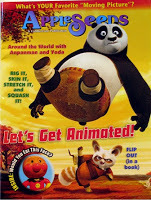 Appropriate ideas:
Appropriate ideas:
What kind of stories or article would your target magazine want? Either start by figuring out what topics the magazine might like, or write down a list of your hobbies and interests, and then check which ones might fit that magazine. Keep the focus narrow. Then ask:
Is this appropriate for the magazine’s readership age? Will they understand and be interested in the topic? Can I write this story or article within the magazine’s word limits? Do I need to focus it more? What is the theme (message) of my story? What will readers take away from my article? Why would the reader be interested?
The Parts of an Article or Story for Children.
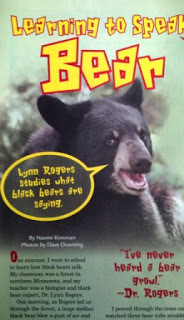 ·A catchy title. The best titles hint at the genre or subject matter.
·A catchy title. The best titles hint at the genre or subject matter.
·A dramatic beginning, with a hook. A good beginning:grabs the reader’s attention with action, dialogue, or a hint of drama to comesets the sceneindicates the genre and tone (in fiction) or the article type (in nonfiction)has voice·A solid middle, which moves the story forward or fulfills the goal of the article. Fiction should focus on plot that builds to a climax, and character development, ideally involving a change in the character as he/she learns the lesson of the story.
An article should focus on information directly related to the main topic. It should be organized in a logical way, with transitions between subtopics. The tone should be friendly and lively, not lecturing. Unfamiliar words should be defined within the text, or in a sidebar.
·A satisfying ending that wraps up the story or closes the article. Endings may circle back to the beginning. The message should be clear here, but not preachy.
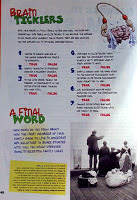 ·Bonus material: An article or even a story may use sidebars, crafts, recipes, photos, etc. to provide more value.
·Bonus material: An article or even a story may use sidebars, crafts, recipes, photos, etc. to provide more value.
·For nonfiction, include a bibliography with several reliable sources.
Types of articles:
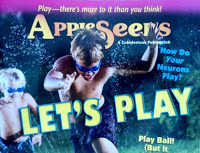 Informational Profile/InterviewQ&AHow-toCraftPuzzleRecipe Personal ExperienceSelf-Help
Informational Profile/InterviewQ&AHow-toCraftPuzzleRecipe Personal ExperienceSelf-Help
Topics:
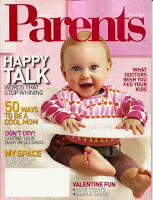 Current Events/News/PoliticsPopular Culture/Fashion/LifestyleHistory/Culture/Multicultural IssuesScience/TechnologyNature/Animal/PetsCollege/CareerInspirational/ReligiousHealth/Nutrition/FitnessSports/HobbiesTravelEducation/Parenting/Family
Current Events/News/PoliticsPopular Culture/Fashion/LifestyleHistory/Culture/Multicultural IssuesScience/TechnologyNature/Animal/PetsCollege/CareerInspirational/ReligiousHealth/Nutrition/FitnessSports/HobbiesTravelEducation/Parenting/Family
The series What Your _X_ Grader Needs to Know, for each grade level, can help identify appropriate topics for each grade level.
Common Core State Standards Initiative provides links to all the CCSS standards.
Core Knowledge Sequence: Content and Skill Guidelines for Preschool-Grade 8 is available as a free download.
Reading Level
Microsoft Word: Flesch-Kincaid Grade Level - Search for “display readability statistics” in the Help menu.LEXILE: http://www.lexile.com/ (You sign up but it’s free.)Lexile with word highlights: http://www.lextutor.ca/vp/eng/ ATOS for Books analyzer: http://www.renlearn.com/atos/analyze.aspx?type=1 (also free) Children’s Writer’s Word Book
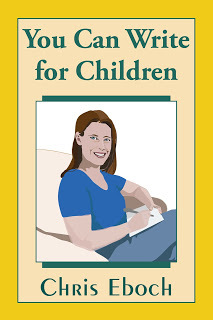 About Chris Eboch
About Chris Eboch
Chris Eboch’s novels for ages nine and up include The Eyes of Pharaoh, a mystery in ancient Egypt; The Well of Sacrifice, a Mayan adventure; The Genie’s Gift, a middle eastern fantasy; and the Haunted series, about kids who travel with a ghost hunter TV show, which starts with The Ghost on the Stairs. Her writing craft books include You Can Write for Children: How to Write Great Stories, Articles, and Books for Kids and Teenagers, and Advanced Plotting. Learn more at www.chriseboch.comor her Amazon page.
Chris’s book Advanced Plotting helps writers fine-tune their plots. You Can Write for Children : How to Write Great Stories, Articles, and Books for Kids and Teenagers offers an overview on writing for young people. Learn how to find ideas and develop those ideas into stories, articles, and books. Understand the basics of character development, plot, setting, and theme – and some advanced elements, along with how to use point of view, dialogue, and thoughts. Finally, learn about editing your work and getting critiques.
Chris offers critiques of picture books/short stories/articles up to 1500 words for $40. Novel critiques are $2 per page (standard double-spaced manuscript format; minimum $100). Get details and recommendations at www.chriseboch.com/newsletter.htm.
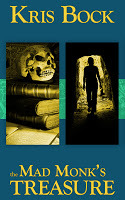 Kris Bock writes novels of suspense and romance involving outdoor adventures and Southwestern landscapes. In Counterfeits, stolen Rembrandt paintings bring danger to a small New Mexico town. Whispers in the Darkfeatures archaeology and intrigue among ancient Southwest ruins. What We Found is a mystery with strong romantic elements about a young woman who finds a murder victim in the woods. The Mad Monk’s Treasure follows the hunt for a long-lost treasure in the New Mexico desert. In The Dead Man’s Treasure, estranged relatives compete to reach a buried treasure by following a series of complex clues.
Kris Bock writes novels of suspense and romance involving outdoor adventures and Southwestern landscapes. In Counterfeits, stolen Rembrandt paintings bring danger to a small New Mexico town. Whispers in the Darkfeatures archaeology and intrigue among ancient Southwest ruins. What We Found is a mystery with strong romantic elements about a young woman who finds a murder victim in the woods. The Mad Monk’s Treasure follows the hunt for a long-lost treasure in the New Mexico desert. In The Dead Man’s Treasure, estranged relatives compete to reach a buried treasure by following a series of complex clues.
Read excerpts at www.krisbock.comor visit her Amazon page. Sign up for Kris Bock newsletter for announcements of new books, sales, and more.
 Explore the Magazine Markets:
Explore the Magazine Markets:MagazineMarkets for Children’s Writers
Children’sWriters and Illustrator’s Market – on sale right now for $7.50!
The SCBWI “Magazine Market Guide” is in The Book, included with membership
Get magazine samples at your library, school, or house of worship; requests sample copies from the publisher; visit publishers’ web sites – many have online samples.
Lists of children’s magazines w/links to websites:
http://www.monroe.lib.in.us/childrens/kidsmags.html
http://blog.allaboutlearningpress.com/magazines-for-kids/
http://www.world-newspapers.com/children.html
Analyze magazines for content and style:
 The cover and tagline: what is the magazine’s focus?
The cover and tagline: what is the magazine’s focus?The table of contents: Are many articles written by one person? Is that person listed in the masthead as staff?Are there regular departments? Who writes these?This page may include submission guidelines.
Content:What types of stories/articles does it use? Be as specific as possible (fiction genres, nonfiction topics, types of activities. For recipes, are they healthy, fun to look at, etc.).Does everything relate to one theme?What is the breakdown of fiction, nonfiction, activities, and regular departments?How long are most pieces?How are pieces illustrated? What kind of sidebars do they use, if any?Does the magazine use advertising? What kinds of products are advertised? (This can give you insight into reader interest, and the magazine’s goals.)
Study several stories or articles. Are they geared toward girls, boys, or both? What age range? What can you tell about the magazine’s style? Is it wholesome or edgy? Is it focused on health, history, science, religion, or celebrity gossip?
 Appropriate ideas:
Appropriate ideas: What kind of stories or article would your target magazine want? Either start by figuring out what topics the magazine might like, or write down a list of your hobbies and interests, and then check which ones might fit that magazine. Keep the focus narrow. Then ask:
Is this appropriate for the magazine’s readership age? Will they understand and be interested in the topic? Can I write this story or article within the magazine’s word limits? Do I need to focus it more? What is the theme (message) of my story? What will readers take away from my article? Why would the reader be interested?
The Parts of an Article or Story for Children.
 ·A catchy title. The best titles hint at the genre or subject matter.
·A catchy title. The best titles hint at the genre or subject matter.·A dramatic beginning, with a hook. A good beginning:grabs the reader’s attention with action, dialogue, or a hint of drama to comesets the sceneindicates the genre and tone (in fiction) or the article type (in nonfiction)has voice·A solid middle, which moves the story forward or fulfills the goal of the article. Fiction should focus on plot that builds to a climax, and character development, ideally involving a change in the character as he/she learns the lesson of the story.
An article should focus on information directly related to the main topic. It should be organized in a logical way, with transitions between subtopics. The tone should be friendly and lively, not lecturing. Unfamiliar words should be defined within the text, or in a sidebar.
·A satisfying ending that wraps up the story or closes the article. Endings may circle back to the beginning. The message should be clear here, but not preachy.
 ·Bonus material: An article or even a story may use sidebars, crafts, recipes, photos, etc. to provide more value.
·Bonus material: An article or even a story may use sidebars, crafts, recipes, photos, etc. to provide more value.·For nonfiction, include a bibliography with several reliable sources.
Types of articles:
 Informational Profile/InterviewQ&AHow-toCraftPuzzleRecipe Personal ExperienceSelf-Help
Informational Profile/InterviewQ&AHow-toCraftPuzzleRecipe Personal ExperienceSelf-HelpTopics:
 Current Events/News/PoliticsPopular Culture/Fashion/LifestyleHistory/Culture/Multicultural IssuesScience/TechnologyNature/Animal/PetsCollege/CareerInspirational/ReligiousHealth/Nutrition/FitnessSports/HobbiesTravelEducation/Parenting/Family
Current Events/News/PoliticsPopular Culture/Fashion/LifestyleHistory/Culture/Multicultural IssuesScience/TechnologyNature/Animal/PetsCollege/CareerInspirational/ReligiousHealth/Nutrition/FitnessSports/HobbiesTravelEducation/Parenting/FamilyThe series What Your _X_ Grader Needs to Know, for each grade level, can help identify appropriate topics for each grade level.
Common Core State Standards Initiative provides links to all the CCSS standards.
Core Knowledge Sequence: Content and Skill Guidelines for Preschool-Grade 8 is available as a free download.
Reading Level
Microsoft Word: Flesch-Kincaid Grade Level - Search for “display readability statistics” in the Help menu.LEXILE: http://www.lexile.com/ (You sign up but it’s free.)Lexile with word highlights: http://www.lextutor.ca/vp/eng/ ATOS for Books analyzer: http://www.renlearn.com/atos/analyze.aspx?type=1 (also free) Children’s Writer’s Word Book
 About Chris Eboch
About Chris EbochChris Eboch’s novels for ages nine and up include The Eyes of Pharaoh, a mystery in ancient Egypt; The Well of Sacrifice, a Mayan adventure; The Genie’s Gift, a middle eastern fantasy; and the Haunted series, about kids who travel with a ghost hunter TV show, which starts with The Ghost on the Stairs. Her writing craft books include You Can Write for Children: How to Write Great Stories, Articles, and Books for Kids and Teenagers, and Advanced Plotting. Learn more at www.chriseboch.comor her Amazon page.
Chris’s book Advanced Plotting helps writers fine-tune their plots. You Can Write for Children : How to Write Great Stories, Articles, and Books for Kids and Teenagers offers an overview on writing for young people. Learn how to find ideas and develop those ideas into stories, articles, and books. Understand the basics of character development, plot, setting, and theme – and some advanced elements, along with how to use point of view, dialogue, and thoughts. Finally, learn about editing your work and getting critiques.
Chris offers critiques of picture books/short stories/articles up to 1500 words for $40. Novel critiques are $2 per page (standard double-spaced manuscript format; minimum $100). Get details and recommendations at www.chriseboch.com/newsletter.htm.
 Kris Bock writes novels of suspense and romance involving outdoor adventures and Southwestern landscapes. In Counterfeits, stolen Rembrandt paintings bring danger to a small New Mexico town. Whispers in the Darkfeatures archaeology and intrigue among ancient Southwest ruins. What We Found is a mystery with strong romantic elements about a young woman who finds a murder victim in the woods. The Mad Monk’s Treasure follows the hunt for a long-lost treasure in the New Mexico desert. In The Dead Man’s Treasure, estranged relatives compete to reach a buried treasure by following a series of complex clues.
Kris Bock writes novels of suspense and romance involving outdoor adventures and Southwestern landscapes. In Counterfeits, stolen Rembrandt paintings bring danger to a small New Mexico town. Whispers in the Darkfeatures archaeology and intrigue among ancient Southwest ruins. What We Found is a mystery with strong romantic elements about a young woman who finds a murder victim in the woods. The Mad Monk’s Treasure follows the hunt for a long-lost treasure in the New Mexico desert. In The Dead Man’s Treasure, estranged relatives compete to reach a buried treasure by following a series of complex clues. Read excerpts at www.krisbock.comor visit her Amazon page. Sign up for Kris Bock newsletter for announcements of new books, sales, and more.
Published on July 11, 2016 05:30
May 16, 2016
How to Write a Great Mystery for Children
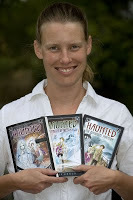 Last week I shared an article on writing mysteries, first published in Writer’s Guide to 2012. Here’s another section of the article, focused on writing mysteries for children and teenagers.
Last week I shared an article on writing mysteries, first published in Writer’s Guide to 2012. Here’s another section of the article, focused on writing mysteries for children and teenagers.Starting Young
Children may become mystery fans at an early age. Juliana Hanford, Senior Editor at Kane Press, says, “I vividly remember the very first time I was reading a mystery on my own and had that ‘can’t put it down!’ feeling. I think that feeling can make kids not just mystery lovers but book lovers for life!”
“I guess children enjoy reading mysteries for the same reason adults do,” says Mara Rockliff, who writes a humorous chapter book mystery series under the pen name Lewis B. Montgomery. “They’re fun, they’re exciting, they’re full of surprises and suspense. And a mystery series offers the chance to keep coming back to characters we love.”
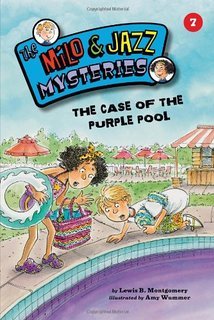 As a bonus, mysteries stretch the way kids think. Of her Milo & Jazz Mysteries, Rockliff says, “Kids read these books for fun, but teachers like them because the detective lessons teach critical thinking skills. For instance, setting a trap for a culprit equals predicting and testing; circumstantial evidence equals making inferences. And the back of every book includes puzzles and games to help the reader hone those skills.”
As a bonus, mysteries stretch the way kids think. Of her Milo & Jazz Mysteries, Rockliff says, “Kids read these books for fun, but teachers like them because the detective lessons teach critical thinking skills. For instance, setting a trap for a culprit equals predicting and testing; circumstantial evidence equals making inferences. And the back of every book includes puzzles and games to help the reader hone those skills.” Mysteries for kids aren’t quite the same as mysteries for adults, of course. “Practically all adult mysteries are murder mysteries, but in a realistic chapter book, you can’t have kids knocking each other off,” Rockliff says. “One of the big challenges is thinking of new crimes that are serious enough to be investigated but not too serious. If it’s theft, it needs to be a funny and unusual theft, as in The Case of the Stinky Socks or The Case of the Missing Moose. Or it might be something off the wall: figuring out how the public pool turned purple overnight, or trying to prove a pet psychic is a fake.”
 By the time readers reach the teen years, fewer crimes are off-limits. Sara Beitia wrote The Last Good Place of Lily Odilon, which she calls “A noir-ish contemporary Young Adult.” She says, “In reality, kids can and do encounter the heavy stuff – love and death and people with bad intentions – and like anyone, they mull these things over and try to digest the implications. And they expect to encounter the heavy stuff in literature, too. Perhaps it helps with the digesting. In dealing with these darker matters, it’s rather amazing what can be covered in kid lit [and] kids often shock adults with a frank interest in the lurid. Still, everyone has an opinion as to how much kids can and should be exposed to in books.”
By the time readers reach the teen years, fewer crimes are off-limits. Sara Beitia wrote The Last Good Place of Lily Odilon, which she calls “A noir-ish contemporary Young Adult.” She says, “In reality, kids can and do encounter the heavy stuff – love and death and people with bad intentions – and like anyone, they mull these things over and try to digest the implications. And they expect to encounter the heavy stuff in literature, too. Perhaps it helps with the digesting. In dealing with these darker matters, it’s rather amazing what can be covered in kid lit [and] kids often shock adults with a frank interest in the lurid. Still, everyone has an opinion as to how much kids can and should be exposed to in books.”Most children’s book publishers are open to mysteries, but don’t specialize. Brian Farrey, Flux Acquisitions editor, says, “I’ve heard from countless librarians at the American Library Association conferences that their teens are looking for more mysteries, to the point where librarians direct them to adult books to satisfy the need. [Therefore] my ears perk up a bit if I’m presented with one in submissions. But I don’t acquire based on fads or trends.”
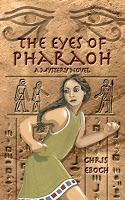 Chris Eboch’s novels for ages nine and up include The Eyes of Pharaoh, a mystery in ancient Egypt; The Well of Sacrifice, a Mayan adventure; The Genie’s Gift, a middle eastern fantasy; and the Haunted series, about kids who travel with a ghost hunter TV show, which starts with The Ghost on the Stairs. Her writing craft books include You Can Write for Children: How to Write Great Stories, Articles, and Books for Kids and Teenagers, and Advanced Plotting. Learn more at www.chriseboch.comor check out her writing tips at her Write Like a Pro! blog. Learn more at www.chriseboch.comor her Amazon page,
Chris Eboch’s novels for ages nine and up include The Eyes of Pharaoh, a mystery in ancient Egypt; The Well of Sacrifice, a Mayan adventure; The Genie’s Gift, a middle eastern fantasy; and the Haunted series, about kids who travel with a ghost hunter TV show, which starts with The Ghost on the Stairs. Her writing craft books include You Can Write for Children: How to Write Great Stories, Articles, and Books for Kids and Teenagers, and Advanced Plotting. Learn more at www.chriseboch.comor check out her writing tips at her Write Like a Pro! blog. Learn more at www.chriseboch.comor her Amazon page,
Published on May 16, 2016 05:00
May 13, 2016
Murder and Mayhem, Crime and Clues: How to Write a Great Mystery
This article was first published in Writer’s Guide to 2012.
People like to know the answers, but they also love a mystery. Mystery books allows readers to ponder options, follow clues, test their wits – and ultimately learn the answers.
The mystery category contains many sub-genres, from gritty Hard-Boiled to light and humorous Cozies. Some fans read across sub-genres, but many have favorites. Claire Eddy, Senior Editor at Tor/Forge Books, says, “I am a sucker for a well crafted noir tale. Also historical mysteries, but only if the author has really done their research.”
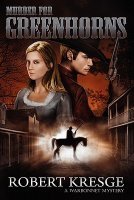 Robert Kresge wrote Murder for Greenhorns, about a young schoolteacher and a Texas cowboy who join forces to solve a murder in 1870 Wyoming. “They say ‘write what you know.’ So with 30 years in the CIA, should I be writing spy novels? It can also mean ‘write what you read the most of.’ I found myself reading or listening to [historical mystery heroes] Brother Cadfael, Marcus Didius Falco, Amelia Peabody, and Phryne Fisher.”
Robert Kresge wrote Murder for Greenhorns, about a young schoolteacher and a Texas cowboy who join forces to solve a murder in 1870 Wyoming. “They say ‘write what you know.’ So with 30 years in the CIA, should I be writing spy novels? It can also mean ‘write what you read the most of.’ I found myself reading or listening to [historical mystery heroes] Brother Cadfael, Marcus Didius Falco, Amelia Peabody, and Phryne Fisher.”
Mystery or Suspense?
Whether historical or modern day, mysteries can feature heroes ranging from police officers and private eyes to nosy amateurs or innocent victims who get swept into trouble. Thrillers and suspense novels may also be considered mysteries, even if the hero isn’t trying to solve a crime in the traditional sense.
 For example, my Southwestern adventure The Mad Monk's Treasure features the heroine and hero trying to elude villains while they hunt for a long-lost treasure. Romantic suspense novels like these find favor with many mystery fans if they have enough action.
For example, my Southwestern adventure The Mad Monk's Treasure features the heroine and hero trying to elude villains while they hunt for a long-lost treasure. Romantic suspense novels like these find favor with many mystery fans if they have enough action.
Each sub-genre has its particular challenges. “Dealing with romantic suspense means fitting a mystery or a suspense into the romance reader’s expectations,” says Terry Odell, author of Where Danger Hides. “In mystery series, relationships can develop over the course of many books; in romantic suspense, it’s one.”
Aspiring authors better know the genre’s traditions. Cozies tend to avoid sex or on-stage violence. Hard-boiled mysteries delve into the seamy side of life. Police procedurals must get the police work right. Techno-thrillers focus on the latest technology. Reading widely in one’s chosen sub-genre is the best way to identify these differences.
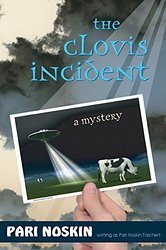 But genres, like rules, are made to be broken. Pari Noskin Taichert calls her Agatha Award-nominated Sasha Solomon series, “Whodunits – with a humorous New Mexican flair. They’re not your standard cozies because they have an edge to them. Some of my readers think they’re beach reads while others find the deeper themes. I’m happy to satisfy both ends of the spectrum.”
But genres, like rules, are made to be broken. Pari Noskin Taichert calls her Agatha Award-nominated Sasha Solomon series, “Whodunits – with a humorous New Mexican flair. They’re not your standard cozies because they have an edge to them. Some of my readers think they’re beach reads while others find the deeper themes. I’m happy to satisfy both ends of the spectrum.”
Mixing genres can be fun for the writer and the audience, but may also make it harder to sell the manuscript. Kresge received about 200 rejections for Murder for Greenhorns, often hearing, “This is just a Western and we don’t publish Westerns.” He was about to give up, when he found a small local publisher that shared his vision. Murder for Greenhorns became a finalist for the 2011 Bruce Alexander Award for Best Historical Mystery of the Year.
Putting It All Together
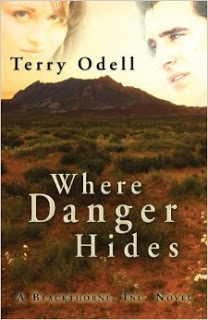 A solid mystery requires a clever and believable puzzle. Noskin Taichert says, “For me, with traditional mystery series, there are three big challenges: telling a really good story; making the puzzle interesting and believable enough that the reader wants to work with my amateur-sleuth protagonist to figure out the crime; and not giving too much away with the hints I put in the story.”
A solid mystery requires a clever and believable puzzle. Noskin Taichert says, “For me, with traditional mystery series, there are three big challenges: telling a really good story; making the puzzle interesting and believable enough that the reader wants to work with my amateur-sleuth protagonist to figure out the crime; and not giving too much away with the hints I put in the story.”
Odell lists the keys to a good mystery as “Providing clues, being fair to the readers with red herrings, and, for anything current, keeping on top of the latest technology. Things are out of date before you finish writing, and the public has a skewed perception of reality based on television.”
But a good puzzle is not enough. Editors judges mysteries by the same standards as other books. “What I’ve seen a lot lately is a great premise, a terrific pitch, and then a mediocre manuscript,” says Brian Farrey, Flux Acquisitions editor. “Having that great premise is meaningless if the writing is phoned in and reads like anyone could have written it. I look for authors who have a pronounced sense of voice.”
At Kane Press, Senior Editor Juliana Hanford says, “We always look for great characters. And when authors can balance humor with nail-biting, on-the-edge-of-your-seat suspense, and can come up with a final twist that surprises even the readers who think they know everything, then we’re sold!”
Libby Sternberg, Editor-in-Chief of IstoriaBooks, says, “We look for the same thing we want in all submissions: a good story, well-told. Do I want to keep turning or clicking through the pages, and do I want to keep hearing this author tell me the story? I know that seems simple, but you’d be surprised how hard it is to write a page-turning story that has a great ‘voice’ attached to it.”
Playing Fair
Sternberg notes, “With mystery, I’d also add this requirement – the mystery itself must be well-constructed with a resolution that does not rely on a deus ex machina, or anything similar – I hate reading mysteries where, suddenly, a strange character, never encountered in the story previously, shows up and turns out to be the criminal. The reader should be able to reread the story and see how the clues add up to the denouement.”
“In writing mysteries, one has to come up with a crime, figure out who did it, create a sympathetic sleuth or sleuths, manage subplots, plant clues, play fair with your readers, and – usually – come to a satisfying conclusion,” Kresge says. That’s in addition to the challenges present in all types of fiction: “Creating and sustaining believable characters, plotting, pacing, setting, research. Piece of cake juggling all those elements, right?”
 How does a writer deal with all these challenges? Noskin Taichert says, “I’ve written all my life. That’s part of the way I’ve developed it. Reading voraciously is another. Studying writers – the popular ones who tell stories really well – makes a difference in my own writing. I’ve also taken a few workshops here and there, but the biggest result has come from committing to writing, every single day.”
How does a writer deal with all these challenges? Noskin Taichert says, “I’ve written all my life. That’s part of the way I’ve developed it. Reading voraciously is another. Studying writers – the popular ones who tell stories really well – makes a difference in my own writing. I’ve also taken a few workshops here and there, but the biggest result has come from committing to writing, every single day.”
Writing a great mystery that is also a great book isn’t easy, but it has its rewards. Sternberg says, “I’ve read various reports that indicate the mystery market remains strong. Certainly, its fans are loyal and intelligent, always willing to look at new authors and material. Well-written mysteries take a tremendous amount of talent, and what I love about mystery fans is that they appreciate the skill level of mystery writers.”
Finding an Audience
Mystery fans show great loyalty to favorite authors, but reaching potential fans can be a challenge for newcomers. E-publishing is providing new opportunities. Eddy has noticed a jump in e-books sales for genre fiction, especially science fiction, fantasy, and mysteries. “As the devices proliferate I think we will see this continue,” she says. “People love to read about murder and mayhem – the way they read them might change; the desire for the genre will still be there.”
 “It also gives authors a way to keep [out-of-print] books alive,” Odell notes, “and to get things published that straddle or cross genres, or don’t fit into the narrower confines of traditional publishers.”
“It also gives authors a way to keep [out-of-print] books alive,” Odell notes, “and to get things published that straddle or cross genres, or don’t fit into the narrower confines of traditional publishers.”
“I’m launching an original e-book mystery soon,” Noskin Taichert says. “More and more writers are taking this chance partly because of economics, but for me it’s mostly about artistic freedom and control. If I write a protagonist who editors at the major publishers say mystery readers aren’t ready for – like my new one who can communicate with insects and other non-humans – I have the freedom to give her life even though she may not fit the mold that New York City houses are looking for right now.”
The time has never been better for mysteries, whether for children or adults, traditionally or independently published, and in whatever subgenre. As Hanford says, “Good mysteries never go out of style!”
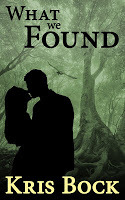 Kris Bock writes action-packed romantic suspense involving outdoor adventures and Southwestern landscapes. In Counterfeits, stolen Rembrandt paintings bring danger to a small New Mexico town. Whispers in the Dark features archaeology and intrigue among ancient Southwest ruins. What We Found is a mystery with strong romantic elements about a young woman who finds a murder victim in the woods. The Mad Monk’s Treasurefollows the hunt for a long-lost treasure in the New Mexico desert. In The Dead Man’s Treasure, estranged relatives compete to reach a buried treasure by following a series of complex clues. Read excerpts at www.krisbock.com or visit her Amazon page.
Kris Bock writes action-packed romantic suspense involving outdoor adventures and Southwestern landscapes. In Counterfeits, stolen Rembrandt paintings bring danger to a small New Mexico town. Whispers in the Dark features archaeology and intrigue among ancient Southwest ruins. What We Found is a mystery with strong romantic elements about a young woman who finds a murder victim in the woods. The Mad Monk’s Treasurefollows the hunt for a long-lost treasure in the New Mexico desert. In The Dead Man’s Treasure, estranged relatives compete to reach a buried treasure by following a series of complex clues. Read excerpts at www.krisbock.com or visit her Amazon page.
People like to know the answers, but they also love a mystery. Mystery books allows readers to ponder options, follow clues, test their wits – and ultimately learn the answers.
The mystery category contains many sub-genres, from gritty Hard-Boiled to light and humorous Cozies. Some fans read across sub-genres, but many have favorites. Claire Eddy, Senior Editor at Tor/Forge Books, says, “I am a sucker for a well crafted noir tale. Also historical mysteries, but only if the author has really done their research.”
 Robert Kresge wrote Murder for Greenhorns, about a young schoolteacher and a Texas cowboy who join forces to solve a murder in 1870 Wyoming. “They say ‘write what you know.’ So with 30 years in the CIA, should I be writing spy novels? It can also mean ‘write what you read the most of.’ I found myself reading or listening to [historical mystery heroes] Brother Cadfael, Marcus Didius Falco, Amelia Peabody, and Phryne Fisher.”
Robert Kresge wrote Murder for Greenhorns, about a young schoolteacher and a Texas cowboy who join forces to solve a murder in 1870 Wyoming. “They say ‘write what you know.’ So with 30 years in the CIA, should I be writing spy novels? It can also mean ‘write what you read the most of.’ I found myself reading or listening to [historical mystery heroes] Brother Cadfael, Marcus Didius Falco, Amelia Peabody, and Phryne Fisher.”Mystery or Suspense?
Whether historical or modern day, mysteries can feature heroes ranging from police officers and private eyes to nosy amateurs or innocent victims who get swept into trouble. Thrillers and suspense novels may also be considered mysteries, even if the hero isn’t trying to solve a crime in the traditional sense.
 For example, my Southwestern adventure The Mad Monk's Treasure features the heroine and hero trying to elude villains while they hunt for a long-lost treasure. Romantic suspense novels like these find favor with many mystery fans if they have enough action.
For example, my Southwestern adventure The Mad Monk's Treasure features the heroine and hero trying to elude villains while they hunt for a long-lost treasure. Romantic suspense novels like these find favor with many mystery fans if they have enough action.Each sub-genre has its particular challenges. “Dealing with romantic suspense means fitting a mystery or a suspense into the romance reader’s expectations,” says Terry Odell, author of Where Danger Hides. “In mystery series, relationships can develop over the course of many books; in romantic suspense, it’s one.”
Aspiring authors better know the genre’s traditions. Cozies tend to avoid sex or on-stage violence. Hard-boiled mysteries delve into the seamy side of life. Police procedurals must get the police work right. Techno-thrillers focus on the latest technology. Reading widely in one’s chosen sub-genre is the best way to identify these differences.
 But genres, like rules, are made to be broken. Pari Noskin Taichert calls her Agatha Award-nominated Sasha Solomon series, “Whodunits – with a humorous New Mexican flair. They’re not your standard cozies because they have an edge to them. Some of my readers think they’re beach reads while others find the deeper themes. I’m happy to satisfy both ends of the spectrum.”
But genres, like rules, are made to be broken. Pari Noskin Taichert calls her Agatha Award-nominated Sasha Solomon series, “Whodunits – with a humorous New Mexican flair. They’re not your standard cozies because they have an edge to them. Some of my readers think they’re beach reads while others find the deeper themes. I’m happy to satisfy both ends of the spectrum.”Mixing genres can be fun for the writer and the audience, but may also make it harder to sell the manuscript. Kresge received about 200 rejections for Murder for Greenhorns, often hearing, “This is just a Western and we don’t publish Westerns.” He was about to give up, when he found a small local publisher that shared his vision. Murder for Greenhorns became a finalist for the 2011 Bruce Alexander Award for Best Historical Mystery of the Year.
Putting It All Together
 A solid mystery requires a clever and believable puzzle. Noskin Taichert says, “For me, with traditional mystery series, there are three big challenges: telling a really good story; making the puzzle interesting and believable enough that the reader wants to work with my amateur-sleuth protagonist to figure out the crime; and not giving too much away with the hints I put in the story.”
A solid mystery requires a clever and believable puzzle. Noskin Taichert says, “For me, with traditional mystery series, there are three big challenges: telling a really good story; making the puzzle interesting and believable enough that the reader wants to work with my amateur-sleuth protagonist to figure out the crime; and not giving too much away with the hints I put in the story.”Odell lists the keys to a good mystery as “Providing clues, being fair to the readers with red herrings, and, for anything current, keeping on top of the latest technology. Things are out of date before you finish writing, and the public has a skewed perception of reality based on television.”
But a good puzzle is not enough. Editors judges mysteries by the same standards as other books. “What I’ve seen a lot lately is a great premise, a terrific pitch, and then a mediocre manuscript,” says Brian Farrey, Flux Acquisitions editor. “Having that great premise is meaningless if the writing is phoned in and reads like anyone could have written it. I look for authors who have a pronounced sense of voice.”
At Kane Press, Senior Editor Juliana Hanford says, “We always look for great characters. And when authors can balance humor with nail-biting, on-the-edge-of-your-seat suspense, and can come up with a final twist that surprises even the readers who think they know everything, then we’re sold!”
Libby Sternberg, Editor-in-Chief of IstoriaBooks, says, “We look for the same thing we want in all submissions: a good story, well-told. Do I want to keep turning or clicking through the pages, and do I want to keep hearing this author tell me the story? I know that seems simple, but you’d be surprised how hard it is to write a page-turning story that has a great ‘voice’ attached to it.”
Playing Fair
Sternberg notes, “With mystery, I’d also add this requirement – the mystery itself must be well-constructed with a resolution that does not rely on a deus ex machina, or anything similar – I hate reading mysteries where, suddenly, a strange character, never encountered in the story previously, shows up and turns out to be the criminal. The reader should be able to reread the story and see how the clues add up to the denouement.”
“In writing mysteries, one has to come up with a crime, figure out who did it, create a sympathetic sleuth or sleuths, manage subplots, plant clues, play fair with your readers, and – usually – come to a satisfying conclusion,” Kresge says. That’s in addition to the challenges present in all types of fiction: “Creating and sustaining believable characters, plotting, pacing, setting, research. Piece of cake juggling all those elements, right?”
 How does a writer deal with all these challenges? Noskin Taichert says, “I’ve written all my life. That’s part of the way I’ve developed it. Reading voraciously is another. Studying writers – the popular ones who tell stories really well – makes a difference in my own writing. I’ve also taken a few workshops here and there, but the biggest result has come from committing to writing, every single day.”
How does a writer deal with all these challenges? Noskin Taichert says, “I’ve written all my life. That’s part of the way I’ve developed it. Reading voraciously is another. Studying writers – the popular ones who tell stories really well – makes a difference in my own writing. I’ve also taken a few workshops here and there, but the biggest result has come from committing to writing, every single day.”Writing a great mystery that is also a great book isn’t easy, but it has its rewards. Sternberg says, “I’ve read various reports that indicate the mystery market remains strong. Certainly, its fans are loyal and intelligent, always willing to look at new authors and material. Well-written mysteries take a tremendous amount of talent, and what I love about mystery fans is that they appreciate the skill level of mystery writers.”
Finding an Audience
Mystery fans show great loyalty to favorite authors, but reaching potential fans can be a challenge for newcomers. E-publishing is providing new opportunities. Eddy has noticed a jump in e-books sales for genre fiction, especially science fiction, fantasy, and mysteries. “As the devices proliferate I think we will see this continue,” she says. “People love to read about murder and mayhem – the way they read them might change; the desire for the genre will still be there.”
 “It also gives authors a way to keep [out-of-print] books alive,” Odell notes, “and to get things published that straddle or cross genres, or don’t fit into the narrower confines of traditional publishers.”
“It also gives authors a way to keep [out-of-print] books alive,” Odell notes, “and to get things published that straddle or cross genres, or don’t fit into the narrower confines of traditional publishers.”“I’m launching an original e-book mystery soon,” Noskin Taichert says. “More and more writers are taking this chance partly because of economics, but for me it’s mostly about artistic freedom and control. If I write a protagonist who editors at the major publishers say mystery readers aren’t ready for – like my new one who can communicate with insects and other non-humans – I have the freedom to give her life even though she may not fit the mold that New York City houses are looking for right now.”
The time has never been better for mysteries, whether for children or adults, traditionally or independently published, and in whatever subgenre. As Hanford says, “Good mysteries never go out of style!”
 Kris Bock writes action-packed romantic suspense involving outdoor adventures and Southwestern landscapes. In Counterfeits, stolen Rembrandt paintings bring danger to a small New Mexico town. Whispers in the Dark features archaeology and intrigue among ancient Southwest ruins. What We Found is a mystery with strong romantic elements about a young woman who finds a murder victim in the woods. The Mad Monk’s Treasurefollows the hunt for a long-lost treasure in the New Mexico desert. In The Dead Man’s Treasure, estranged relatives compete to reach a buried treasure by following a series of complex clues. Read excerpts at www.krisbock.com or visit her Amazon page.
Kris Bock writes action-packed romantic suspense involving outdoor adventures and Southwestern landscapes. In Counterfeits, stolen Rembrandt paintings bring danger to a small New Mexico town. Whispers in the Dark features archaeology and intrigue among ancient Southwest ruins. What We Found is a mystery with strong romantic elements about a young woman who finds a murder victim in the woods. The Mad Monk’s Treasurefollows the hunt for a long-lost treasure in the New Mexico desert. In The Dead Man’s Treasure, estranged relatives compete to reach a buried treasure by following a series of complex clues. Read excerpts at www.krisbock.com or visit her Amazon page.
Published on May 13, 2016 14:36
April 25, 2016
Writing Workshops with Author/Teacher Chris Eboch
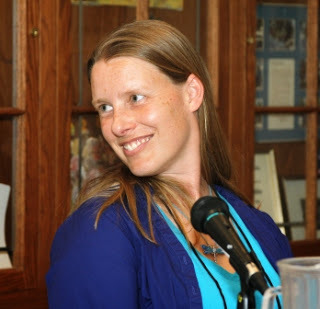 Online, in May: I'll be teaching an online workshop on Advanced Plotting: Keep Those Pages Turning.
Online, in May: I'll be teaching an online workshop on Advanced Plotting: Keep Those Pages Turning.COURSE DESCRIPTION: Many books and workshops teach the basics of plotting: conflict, complications, and climax. Now learn advanced techniques that will make a decent plot dynamic. Start with a “grab you by the throat” opening to pull readers into the story. Learn how to pack the plot full by complicating your complications. Control your pacing through sentence and paragraph length. And finally, cliffhanger chapter endings ensure late-night reading under the covers. Learn techniques to make any story or book better. Novelists will benefit from these insights, whether they are just starting out or have years of experience.
COST: $125, which includes weekly assignments and individual feedback from the instructor. This class will be conducted through a Discussion Board, with the opportunity for students to ask questions and post homework samples.
BUY NOW: Advanced Plotting with Chris Eboch (4 weeks, starting 5/4/2016) Limit: 15 students. Early registration is recommended.
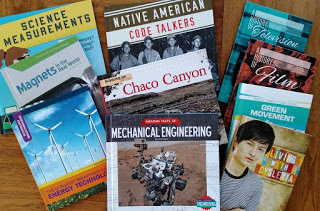 New York, in June: I'll present three workshops at the 21st Century Children's Nonfiction Conference. The conference is June 10-12 at Iona College in New Rochelle, NY. To learn more about the conference, visit the website.
New York, in June: I'll present three workshops at the 21st Century Children's Nonfiction Conference. The conference is June 10-12 at Iona College in New Rochelle, NY. To learn more about the conference, visit the website.My programs are:
Children's Nonfiction 101: Friday Intensives (an optional extra three-hour intensive): If you are new to children’s nonfiction publishing, or want a refresher about the current terminology, markets, and acquisition process, this intensive will be invaluable. Presented with Caryn Wiseman (Andrea Brown Literary Agency) and Michelle Bisson (Capstone).
Show Me the Money: What can an author earn? Learn how writers are making a living, through original book projects, work for hire books, magazines, test passages and more. Explore how to reach some of the less obvious markets, and discuss the attitude changes that need to happen to turn writing into a business.
How to Find NF Work: Where can you look? How do you follow up leads? Learn where and how best to connect with publishers, book packagers, and digital developers at conferences, book fairs, and exhibitions. Presented with author Jennifer Swanson
 August, in North Carolina: I'll present two workshops at the Writers Who Run Retreat, August 3-6 in Fontana Dam, NC. You'll enjoy three full days packed with a morning 2-mile trail run (optional), breakfast, two 2-hour intensive workshops focused on craft and the business of writing, lunch, roundtable critique groups, free writing time, dinner, and a fun social event each evening. Learn more at the website.
August, in North Carolina: I'll present two workshops at the Writers Who Run Retreat, August 3-6 in Fontana Dam, NC. You'll enjoy three full days packed with a morning 2-mile trail run (optional), breakfast, two 2-hour intensive workshops focused on craft and the business of writing, lunch, roundtable critique groups, free writing time, dinner, and a fun social event each evening. Learn more at the website.My programs are:
Plotting Techniques: Are you struggling to plot your novel, or do you have a plot that isn't working? Chris will help you learn how to plot like a pro.
Revisions that Sing: Revising and editing looks easy when Chris shows you how. Learn lots of tips and tricks to help tighten your manuscripts
If you wind up at any of these events, please be sure to say hi!
 Chris Eboch is the author of almost 50 published books. Her writing craft books include Advanced Plottingand You Can Write for Children: How to Write Great Stories, Articles, and Books for Kids and Teenagers. She has sold over 60 writing articles to Writers Digest, Children’s Writer, and the annual Writer’s Guides.
Chris Eboch is the author of almost 50 published books. Her writing craft books include Advanced Plottingand You Can Write for Children: How to Write Great Stories, Articles, and Books for Kids and Teenagers. She has sold over 60 writing articles to Writers Digest, Children’s Writer, and the annual Writer’s Guides. Chris’s novels for ages nine and up include The Eyes of Pharaoh, a mystery in ancient Egypt; The Well of Sacrifice, a Mayan adventure; The Genie’s Gift, a middle eastern fantasy; and the Haunted series. Her recent nonfiction titles, published under the name M. M. Eboch, include World War I Battlefield Medicine, Native American Code Talkers, A History of Film, and Chaco Canyon. Learn more at www.chriseboch.com or her Amazon page.
Chris also writes for adults under the name Kris Bock. Kris Bock writes action-packed romantic suspense involving outdoor adventures and Southwestern landscapes. Read excerpts at www.krisbock.comor visit her Amazon page.
Published on April 25, 2016 05:30
April 11, 2016
The Ghost Miner’s Treasure from Spellbound River Press
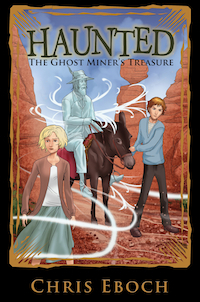 What do you do when a ghost needs your help?
What do you do when a ghost needs your help?Thirteen-year-old Jon and his eleven-year-old sister, Tania, are typical kids – except for the fact that Tania can communicate with ghosts. Their mom and stepdad are producers of a ghost-hunter reality television show, but they don’t know about Tania’s gift, and Tania wants to keep it that way.
Jon can't see ghosts and didn't believe in them, but things are getting too crazy for any other explanation. And if softhearted Tania wants to help the ghosts, Jon will have to protect her and try to keep them both out of trouble.
In The Ghost Miner’s Treasure, Jon and Tania travel with the ghost hunter TV show to the Superstition Mountains of Arizona. The crew visits an abandoned mining town, where the ghost of an old miner is still looking for his lost mine.
Tania is determined to help the old miner move on. But to do that they must resolve the problem keeping him here, which means helping him find his mine. And that means taking the TV crew deep into the rugged land of deserts and canyons.
In the words of an old fortuneteller, “Many dangers you face on this quest. Many trials.”
But they could hardly have imagined the trouble this adventure would bring!
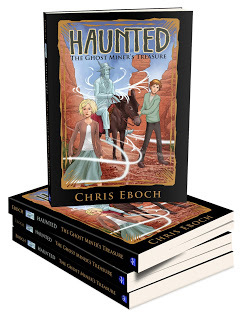 "The action never lets up in this fast-paced story, with something exciting happening in every chapter." – Reader Review
"The action never lets up in this fast-paced story, with something exciting happening in every chapter." – Reader ReviewAladdin/Simon & Schuster released the first three Haunted books in 2008. Now The Ghost Miner's Treasure is back in print from Spellbound River Press.
School Library Journal said of the series, “Haunted is a fun read with some thrills and chills and has the added bonus of some genuine, compassionate personalities.”
A reader review noted,"What I loved most of all, was the way my 4th grade daughter got sucked into the story. She’s a reluctant reader so it was a joy to see her completely absorbed in a book; she immediately started the second book in the series when she finished, and can’t wait for more."
Amazon KindleAmazon PaperbackKoboiBooks
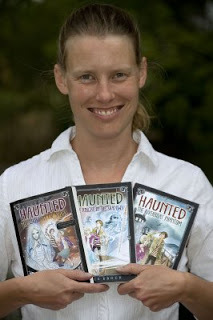 Chris Eboch writes fiction and nonfiction for all ages, with several novels for ages nine and up. In Bandits Peak, a teenage boy meets strangers hiding on the mountains and gets drawn into their crimes, until he risks his life to expose them. The Eyes of Pharaoh is an action-packed mystery set in ancient Egypt. The Genie’s Gift draws on the mythology of 1001 Arabian Nights to take readers on a fantasy adventure. In The Well of Sacrifice, a Mayan girl in ninth-century Guatemala rebels against the High Priest who sacrifices anyone challenging his power.
Chris Eboch writes fiction and nonfiction for all ages, with several novels for ages nine and up. In Bandits Peak, a teenage boy meets strangers hiding on the mountains and gets drawn into their crimes, until he risks his life to expose them. The Eyes of Pharaoh is an action-packed mystery set in ancient Egypt. The Genie’s Gift draws on the mythology of 1001 Arabian Nights to take readers on a fantasy adventure. In The Well of Sacrifice, a Mayan girl in ninth-century Guatemala rebels against the High Priest who sacrifices anyone challenging his power. Learn more at www.chriseboch.comor her Amazon page.
Published on April 11, 2016 05:00
March 28, 2016
21st Century Children’s Nonfiction Conference
The 21st Century Children’s Nonfiction Conference is the interchange for everyone connected with Children’s Nonfiction … publishers, authors, illustrators, educators, librarians, and digital developers. This weekend of workshops, publisher panels, open-table conversations, and social gatherings provides excellent opportunities to learn and connect with people at the leading edge of this field.
June 10-12 at Iona College, New Rochelle, New York.
Conference details are at www.21CNFC.com
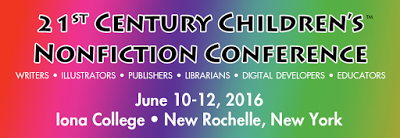
I'll be presenting three workshops:
Children's Nonfiction 101If you are new to children’s nonfiction publishing, or want a refresher about the current terminology, markets, and acquisition process, this intensive will be invaluable. Topics include: The categories of nonfiction for different ages; Does nonfiction have to be 100% true?; The difference between trade and educational publishing; Work for hire books, magazine articles, and test passages; Identifying markets and targeting your work to specific markets; What publishers look for in samples or submissions; and Writing nonfiction that reads like fiction.
Presented by: Caryn Wiseman (Andrea Brown Literary Agency), Chris Eboch (Author/Instructor), Michelle Bisson (Capstone)
Show Me the MoneyWhat can an author earn? Learn how writers are making a living, through original book projects, work for hire books, magazines, test passages and more. Explore how to reach some of the less obvious markets, and discuss the attitude changes that need to happen to turn writing into a business.
Presented by: Chris Eboch (Author/Instructor)
How to Find NF WorkWhere can you look? How do you follow up leads? Learn where and how best to connect with publishers, book packagers, and digital developers at conferences, book fairs, and exhibitions.
Presented by: Chris Eboch (Author/Instructor) and Jennifer Swanson (Author)
This is only a small sampling of the great programming at the conference. Please join us if you have the chance, and say "Hi" at some point during the weekend! See the complete faculty list and schedule here.
June 10-12 at Iona College, New Rochelle, New York.
Conference details are at www.21CNFC.com

I'll be presenting three workshops:
Children's Nonfiction 101If you are new to children’s nonfiction publishing, or want a refresher about the current terminology, markets, and acquisition process, this intensive will be invaluable. Topics include: The categories of nonfiction for different ages; Does nonfiction have to be 100% true?; The difference between trade and educational publishing; Work for hire books, magazine articles, and test passages; Identifying markets and targeting your work to specific markets; What publishers look for in samples or submissions; and Writing nonfiction that reads like fiction.
Presented by: Caryn Wiseman (Andrea Brown Literary Agency), Chris Eboch (Author/Instructor), Michelle Bisson (Capstone)
Show Me the MoneyWhat can an author earn? Learn how writers are making a living, through original book projects, work for hire books, magazines, test passages and more. Explore how to reach some of the less obvious markets, and discuss the attitude changes that need to happen to turn writing into a business.
Presented by: Chris Eboch (Author/Instructor)
How to Find NF WorkWhere can you look? How do you follow up leads? Learn where and how best to connect with publishers, book packagers, and digital developers at conferences, book fairs, and exhibitions.
Presented by: Chris Eboch (Author/Instructor) and Jennifer Swanson (Author)
This is only a small sampling of the great programming at the conference. Please join us if you have the chance, and say "Hi" at some point during the weekend! See the complete faculty list and schedule here.
Published on March 28, 2016 05:30
March 22, 2016
#Free Romantic Suspense in the Southwest
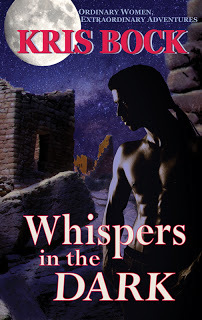 Whispers in the Dark
is romantic suspense with archaeology and intrigue among ancient Southwest ruins.
Whispers in the Dark
is romantic suspense with archaeology and intrigue among ancient Southwest ruins. Reviewers give it a 4.3 star average: “This book was a delight from start to finish!”
Get your Kindle copy today, Free! March 22-24
Whispers in the Dark:
Kylie Hafford craves adventure during her southwestern summer. She doesn’t expect to fight for her life.After an assault in Boston, the young archeologist heads to the remote Puebloan ruins of Lost Valley, Colorado, to excavate. Her first exploration of the crumbling ruins ends in a confrontation with a gorgeous, angry man who looks like a warrior from the Pueblo’s ancient past. Danesh proves that Kylie’s body is ready for love, even if her heart isn’t. If only he weren’t so aggravating. Then she literally stumbles into Sean. His attentions feel safer, but she suspects he's not the simple tourist he claims to be.The summer heats up as Kylie finds mysteries – and surprising friendships – among the ancient ruins. Mysterious lights, murmuring voices, and equipment gone missing plague her dig. Kylie tries to play it safe, but when someone threatens her research, she must take action. She has more enemies than she can possibly guess, and she’s only begun to glimpse the terrors in the dark. She’ll need all her strength and wits to survive. Everything becomes clear – if she wants to save the man she’s starting to love and see the villains brought to justice, she can’t run away again – she must face her fears and fight.
"Wonderfully detailed scenery and diverse characters combine with a clever, well-defined plot in Whispers in the Dark to create an exciting, hard to put down story. Well written and quite enjoyable!" - Reviewed By Melinda Hills for Readers’ Favorite
Whispers in the Dark Excerpt
 A shout slashed the air. I twisted so fast I tumbled onto my backside.
A shout slashed the air. I twisted so fast I tumbled onto my backside.I gaped up at the man towering over me. Bare chest, muscular and bronzed. Black hair pulled back from a face full of sharp planes and angles. Dark eyes fierce under scowling brows.
My heart jolted painfully. I’d come face to face with an ancient warrior. He was gorgeous.
And furious.
At me.
“Don’t you read signs?”
I blinked at the apparition. “Uh....”
He gestured back at the main path. “The signs at every turn saying ‘Stay on the path’? The notice at the entrance telling you to leave artifacts alone? I could have you arrested and fined.”
Oh. I felt color flooding my cheeks. My pounding heart refused to slow yet, and the rush of adrenaline turned my arms and legs to jelly, but I rose steadily enough. I tried to ignore the heat in my face and the queasy feeling of panic in my stomach, which hadn’t yet accepted the message that I wasn’t in danger. “I’m Kylie Hafford,” I said coolly. “The archaeologist. Are you Danesh?”
 I saw a satisfying flash of surprise and then guilt. Or maybe I had just imagined it, as his face settled immediately into a neutral mask. “Yes, I’m Danesh.” He hesitated before adding stiffly, “It’s nice to meet you.”
I saw a satisfying flash of surprise and then guilt. Or maybe I had just imagined it, as his face settled immediately into a neutral mask. “Yes, I’m Danesh.” He hesitated before adding stiffly, “It’s nice to meet you.”“The pleasure’s all mine.”
He must have caught my irony, because he almost smiled—I think. He said, “I’m sorry I startled you. I wasn’t expecting you yet, and....” He shrugged. “I’ve been noticing scuff marks in the ground, off the trail where tourists aren’t supposed to go. I figured someone was poking around, maybe looking for treasure.”
“And you assumed I was your treasure hunter?”
Buy Links:
Amazon USAmazon International Sites
Reader Praise for Whispers in the Dark:
“All in all, a great read, with a strong plot line, and likeable characters! I highly recommend this author!”
“The glimpses of life in the southwest and the ruins of the Ancient Ones were fascinating. The main character's emotional journey is well-drawn and satisfying. A quick read that should please plenty of readers!”
“Whispers in the Dark has a hefty dose of adventure and mystery, as well as a strong main character. I highly recommend this author!”
“The southwest setting and attention to authentic details will make the reader feel like he/she knows the place once the book is finished.”
“It has mystery, suspense, action, drama, romance, and some comic moments. The setting is unique and interesting.”
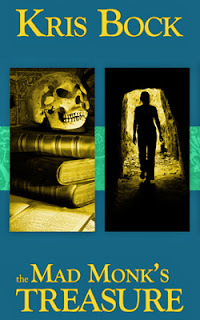 Kris Bock writes novels of suspense and romance involving outdoor adventures and Southwestern landscapes. Read excerpts at www.krisbock.com or visit her Amazon page. Sign up for Kris Bock newsletter for announcements of new books, sales, and more.
Kris Bock writes novels of suspense and romance involving outdoor adventures and Southwestern landscapes. Read excerpts at www.krisbock.com or visit her Amazon page. Sign up for Kris Bock newsletter for announcements of new books, sales, and more.The Mad Monk’s Treasure follows the hunt for a long-lost treasure in the New Mexico desert. In The Dead Man’s Treasure, estranged relatives compete to reach a buried treasure by following a series of complex clues. In Counterfeits, stolen Rembrandt paintings bring danger to a small New Mexico town. What We Found is a mystery with strong romantic elements about a young woman who finds a murder victim in the woods.
Published on March 22, 2016 06:30



